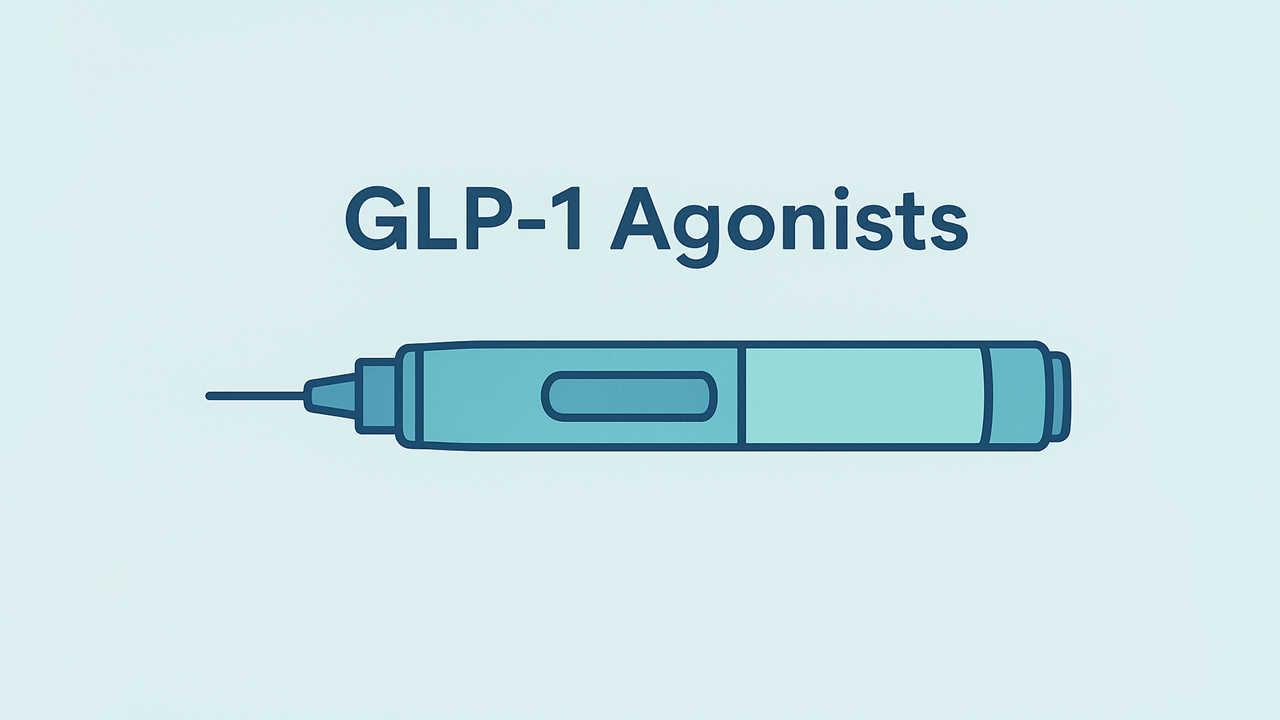Bypassing Web Filters: How to Use Proxies for Blocked Content
The Digital Roadblock Nobody Warned About
A teenager researching current events in a school library clicks a link only to face a glaring “Access Denied” banner. A remote employee on assignment in Shanghai opens her laptop and discovers familiar news outlets will not load. A traveler tries to watch a hometown sports stream from an overseas hotel room and receives a curt region‑lock notice instead. These everyday frustrations share a single cause: web filters. According to recent estimates, more than one‑third of the global online population now encounters some form of content restriction each month [1].
Web filters can preserve productivity or protect against malicious sites, yet they often swing too wide—silencing legitimate journalism, hindering research, and stifling entertainment. Proxies, however, offer a straightforward path around the barricade. This long‑form guide explains how proxies bypass web filters, the safest way to choose and configure them, and the best practices that keep browsing secure and ethical.
How Web Filters Work—and Why Legitimate Sites Disappear
Web filters are hardware appliances, cloud gateways, or software agents that examine outbound traffic and apply rule sets before forwarding a request to the wider internet. Two broad techniques dominate modern filtering:
URL or Domain Blacklisting – The filter maintains a database of banned addresses. Any request that matches is dropped or redirected.
Deep Packet Inspection (DPI) – The system scans packet headers—or, in extreme cases, payloads—for keywords or protocol signatures, blocking traffic that violates policy.
Common Motivations Behind Content Blocks
School and Workplace Controls
Academic and corporate networks routinely deny access to social media, streaming, and gaming domains to boost focus and comply with acceptable‑use rules [2].
Government Censorship
Authoritarian regimes restrict political discourse and international news. Even democratic nations sometimes limit access to gambling or extremist material [3].
Licensing & Geo‑Rights Management
Streaming platforms must honor territorial licensing contracts. If an IP address falls outside the rights region, the service rejects the request [4].
These policies rely on associating a request with the user’s public IP address. Alter or mask that IP, and the entire rule set can crumble—enter the proxy server.
Proxy Fundamentals: The Indirect Route Past a Filter
A proxy server is a relay point that sits between a client (browser or app) and its destination web server. Instead of sending packets directly to example.com, the client sends them to the proxy, which forwards them on the user’s behalf and then returns the response.
That indirection confers two decisive benefits [5]:
IP Substitution – The destination site sees only the proxy’s IP, not the user’s. When that IP resides in an unrestricted region, geo‑locks fall away.
Local Filter Evasion – A campus or office firewall inspects the outbound connection. If the proxy’s domain or port is not blocked, the original request remains invisible.
Image prompt (alt text: “Color flow diagram showing ‘Your Device –→ Proxy Server –→ Website’ with the IP address changing at the proxy node”)
Caption: A proxy inserts its own IP address between the user and the destination site, masking origin details and slipping past local filters.
Proxies do not usually encrypt traffic by default (HTTPS proxies are an exception), nor do they hide usage patterns from the proxy operator. For sensitive activity, users should combine proxies with TLS‑secured sites or consider a VPN.
Choosing the Right Proxy Type for Unblocking
Multiple proxy categories exist, each tuned for specific scenarios. The side‑by‑side comparison below highlights critical distinctions.
| Proxy Type | Ideal Use Case | Major Advantages | Key Limitations |
| HTTP / HTTPS | General web browsing | Simple setup; HTTPS option encrypts data in transit | Handles only web traffic; plain HTTP is insecure |
| SOCKS 5 | Strict firewalls, P2P, gaming clients | Protocol-agnostic; supports UDP; fewer detectable patterns | No built-in encryption; configuration can be complex |
| Browser-based Web Proxy | One-off access from shared or locked-down computers | No installation; quick to use | Ad-heavy; page elements often break; easy for filters to blacklist |
| Residential | Geo-locked streaming & localized SEO research | Real ISP IPs appear “human”; hard to flag | Expensive; limited bandwidth; slower than datacenter peers |
| Datacenter | Everyday unblocking, bulk scraping tasks | High speeds; affordable rates | IPs frequently listed on anti-proxy databases |
Example Scenario
A university dorm resident wants to watch a BBC iPlayer documentary unavailable outside the UK. A UK residential proxy succeeds because iPlayer treats the request as a genuine home‑broadband customer, whereas an inexpensive datacenter proxy is flagged and blocked.
Evaluating and Selecting a Trustworthy Proxy Provider
A proxy is only as safe as its operator. Before committing to a service, apply the criteria below.
Performance, Security, and Reputation
First examine uptime guarantees, bandwidth caps, and authentication options. Well‑known brands—IPRoyal, Webshare, and MyPrivateProxy, for instance—publish real‑time status dashboards and pledge not to log customer traffic [6].
Follow this checklist:
Transparent Ownership – Legitimate providers list corporate registration, physical address, and support channels.
No‑Log Policy – The privacy statement should declare that request details are neither stored nor sold.
Test Period or Money‑Back Guarantee – Reputable platforms offer a trial or refund window.
A 2024 survey found that 42 % of “free proxy” hosts injected advertisements or worse—malware—into returned pages [7]. Paid services therefore dominate serious use‑cases, especially when credentials or financial data are involved.
Price Structures and Server Locations
Proxy plans typically bill per gigabyte or per dedicated IP per month. Geo‑specific content demands nodes inside the target nation; streaming fans often need several backup locations because media companies rotate blocklists.
Tip: When the objective is simply bypassing a school filter, a low‑cost U.S. datacenter proxy on port 443 is often enough. For Netflix Japan or government‑level censorship, invest in a rotating residential or mobile pool instead.
Step‑by‑Step Setup on Major Platforms
Proxy configuration rarely exceeds five minutes once the server details are in hand. The walkthrough below demonstrates system‑level installation on Windows and macOS, plus browser‑only methods that leave other apps untouched.
Instanciar Browser
Instanciar is an app that allows you to create browser instances that can be launched both with a proxy and completely isolated. Click here to learn more.
Windows 10 / 11 System Proxy
Open Settings → Network & Internet → Proxy.
Under Manual proxy setup, toggle Use a proxy server on.
Enter the address and port, tick Don’t use the proxy server for local addresses if desired, and save.
Launch a browser and visit whatismyipaddress.com to confirm the visible IP has changed.
An erroneous entry causes all traffic to fail. Disable the toggle to restore connectivity instantly while troubleshooting.
macOS Network Service
Navigate to Apple menu → System Settings → Network.
Choose the active interface (Wi‑Fi or Ethernet) and click Details.
Select the Proxies tab.
Check Web Proxy (HTTP) or Secure Web Proxy (HTTPS), then enter the server and port.
Tick Proxy requires password to store credentials in the keychain.
macOS routes all outbound requests—including software updates—through the proxy until those checkboxes are cleared.
Browser‑Only Method (Firefox Example)
Firefox maintains independent network settings, perfect for users who prefer local proxying in a single application.
Open Settings → General and scroll to Network Settings.
Select Manual proxy configuration.
Supply HTTP, HTTPS, or SOCKS 5 parameters.
Activate Proxy DNS when using SOCKS v5 to prevent DNS leaks.
Other browsers achieve similar results through extensions such as FoxyProxy that toggle profiles with one click.
Best Practices for Safe and Ethical Proxy Use
Misusing proxies can leak personal information or violate laws. Follow the principles below to minimize risk.
Do: Encrypt Whenever Possible
Combine HTTPS websites with HTTPS or SOCKS‑TLS proxies so both payload and routing are protected from observers [8].
Do: Rotate or Switch Servers for Heavy Tasks
Large‑scale scraping or continuous video streaming can degrade speeds and trigger bans. Many providers supply API endpoints to cycle IPs automatically.
Don’t: Conduct Sensitive Transactions on Unknown Proxies
Banking sessions, health portals, or tax filings should stay on trusted networks or a paid, no‑log proxy. Free servers may capture credentials for resale [7].
Don’t: Ignore Local Regulations
Bypassing state‑mandated filters may carry legal penalties. Verify the legality of proxy use and consider less conspicuous methods such as port 443 datacenter proxies that resemble ordinary HTTPS traffic.
Best Practices for Safe and Ethical Proxy Use
Misconfiguring a proxy can expose login cookies, leak IP metadata, or even violate domestic cybersecurity statutes. The safeguards below close the most common holes without crippling performance.
Encrypt End‑to‑End
Pair HTTPS‑only browsing with HTTPS or SOCKS‑TLS proxies so that both the content and the routing instructions travel inside encrypted tunnels [8]. This prevents local Wi‑Fi snoops, corporate firewalls, and exit‑node operators from harvesting payload data or injecting malicious code. In corporate settings, insist on Perfect Forward Secrecy cipher suites and disable deprecated TLS versions to eliminate downgrade attacks.
Rotate or Switch Servers for Heavy Tasks
High‑bandwidth jobs—continuous 4 K streaming, sentiment‑analysis crawlers hitting thousands of URLs per minute—quickly saturate a single exit and attract blocklists. Many commercial networks expose REST or gRPC endpoints that let you programmatically request “next hop” IPs every N requests or after a specific data cap. By shuffling among subnets, you spread load, avoid hotspot throttling, and lower the statistical footprint that detection models flag as automated activity. A side benefit is fail‑over: if one route drops, the client can auto‑retry through the pool without user intervention. [8]
Avoid Sensitive Transactions on Unvetted Proxies
Banking portals, tax returns, EHR dashboards, and corporate single‑sign‑on flows carry personally identifiable information and session tokens that can be resold [7]. Free or “trial” proxy nodes commonly log full HTTP headers and trade them on dark‑net ad exchanges. Treat unvetted exits like public USB charging stations: fine for anonymous browsing, reckless for credentials. If exposure is unavoidable, layer an end‑to‑end VPN inside the proxy connection so the proxy sees only cipher‑text.
Respect Local Regulations
Many jurisdictions criminalise the circumvention of state‑mandated filters; others impose civil fines for unlicensed use of residential IP ranges [7]. Before deploying a proxy fleet, review telecom statutes, data‑residency laws, and export‑control rules for encryption strength. Where lawful, prefer port 443 datacenter proxies—TLS on the canonical HTTPS port—to blend in with ordinary web traffic and avoid drawing needless regulatory scrutiny.
Beyond Unblocking: Advanced Proxy Applications
Modern proxy networks are less about sneaking past a school filter and more about commercial intelligence at scale.
SEO Rank Tracking
Search engines geotailor results, so a Manhattan laptop sees different SERPs than a Houston phone. A rotating residential pool lets growth teams emulate “organic” searches from hundreds of ZIP codes per hour, capturing clean position data without Recaptcha interruptions [9]. The output feeds local‑SEO dashboards, content calendars, and ad‑spend reallocations.
Social‑Media Management at Scale
Influencer agencies and e‑commerce brands juggle entire farms of TikTok, Instagram, and X accounts. Logging them all from a single IP triggers anti‑spam heuristics [10]. Assigning each handle a sticky residential address replicates the behavior of real households, preserving trust signals while still allowing bulk scheduling, A/B creative testing, and sentiment monitoring. If an account is flagged, only that proxy address is burned, not the whole fleet.
Circumventing ISP Throttling
Many broadband contracts silently down‑shift video or BitTorrent traffic after a quota. Tunnelling over an HTTPS proxy on a non‑standard port (e.g., 8443) masks protocol fingerprints and tricks traffic‑shaping appliances into treating the stream as generic TLS [11]. Side‑by‑side speed tests often reveal 3–5× throughput once the throttle logic is bypassed, turning a choppy 6 Mbps feed back into a stable 25 Mbps stream.
Frequently Asked Questions (FAQ)
Are proxies and VPNs the same?
No. A VPN creates an encrypted tunnel that routes all device traffic through a remote server, whereas a traditional proxy usually handles individual application traffic and may not encrypt by default.
Can a school detect proxy use?
Yes. Advanced firewalls analyze connection patterns and may flag unknown external IPs or non‑standard ports. Choosing HTTPS on port 443 and moderating bandwidth reduces detection likelihood.
Will a proxy guarantee anonymity?
No single tool guarantees anonymity. Combine proxies with HTTPS, avoid sharing personal identifiers, and consider Tor or a zero‑log VPN for highly sensitive activity.
Reclaim Open Access—Responsibly
Web filters may be designed to curb distractions or enforce policy, yet they routinely over‑reach and clip legitimate inquiry, free expression, and personal entertainment. Proxies restore agency by substituting IP addresses and diverting requests along unblocked paths. Selecting a reputable provider, matching the proxy type to the job, and configuring devices carefully wins back information freedom while upholding privacy and security. Use these techniques wisely, respect local regulations, and keep safeguards—encryption, rotating IP pools, and anti‑malware tools—active. With the right proxy strategy, digital barriers become temporary detours rather than dead‑ends.
References
Freedom House. (2024). Freedom on the Net: Global Score Data. https://freedomhouse.org
Lin, Y. (2023). The impact of web filtering on student research outcomes. Journal of Educational Technology, 54(2), 101‑117.
Reporters Without Borders. (2025). 2025 world press freedom index methodology. https://rsf.org
Iordache, A. (2024). Licensing, geoblocking, and the global streaming economy. Media Economics Review, 18(4), 45‑59.
Geonode. (2023). How to bypass censorship with proxies. https://geonode.com/blog
Webshare. (2025). Service level agreement and privacy policy. https://webshare.io
Seidel, J. & Hansen, M. (2024). An empirical analysis of free proxy traffic manipulation. IEEE Security & Privacy, 22(1), 29‑37.
Mozilla. (2025). Secure proxy deployment guidelines. https://developer.mozilla.org
Semrush. (2024). Location‑based SEO ranking factors. https://semrush.com
Karpova, N. (2023). Social media automation without bans: The role of residential proxies. Digital Marketing Quarterly, 7(3), 11‑20.
Open Technology Institute. (2024). ISP traffic shaping and consumer impact report. https://opentechinstitute.org
About the Author
Harry Negron is the CEO of Jivaro, a writer, and an entrepreneur with a strong foundation in science and technology. He holds a B.S. in Microbiology and Mathematics and a Ph.D. in Biomedical Sciences, with a focus on genetics and neuroscience. He has a track record of innovative projects, from building free apps to launching a top-ranked torrent search engine. His content spans finance, science, health, gaming, and technology. Originally from Puerto Rico and based in Japan since 2018, he leverages his diverse background to share insights and tools aimed at helping others.































